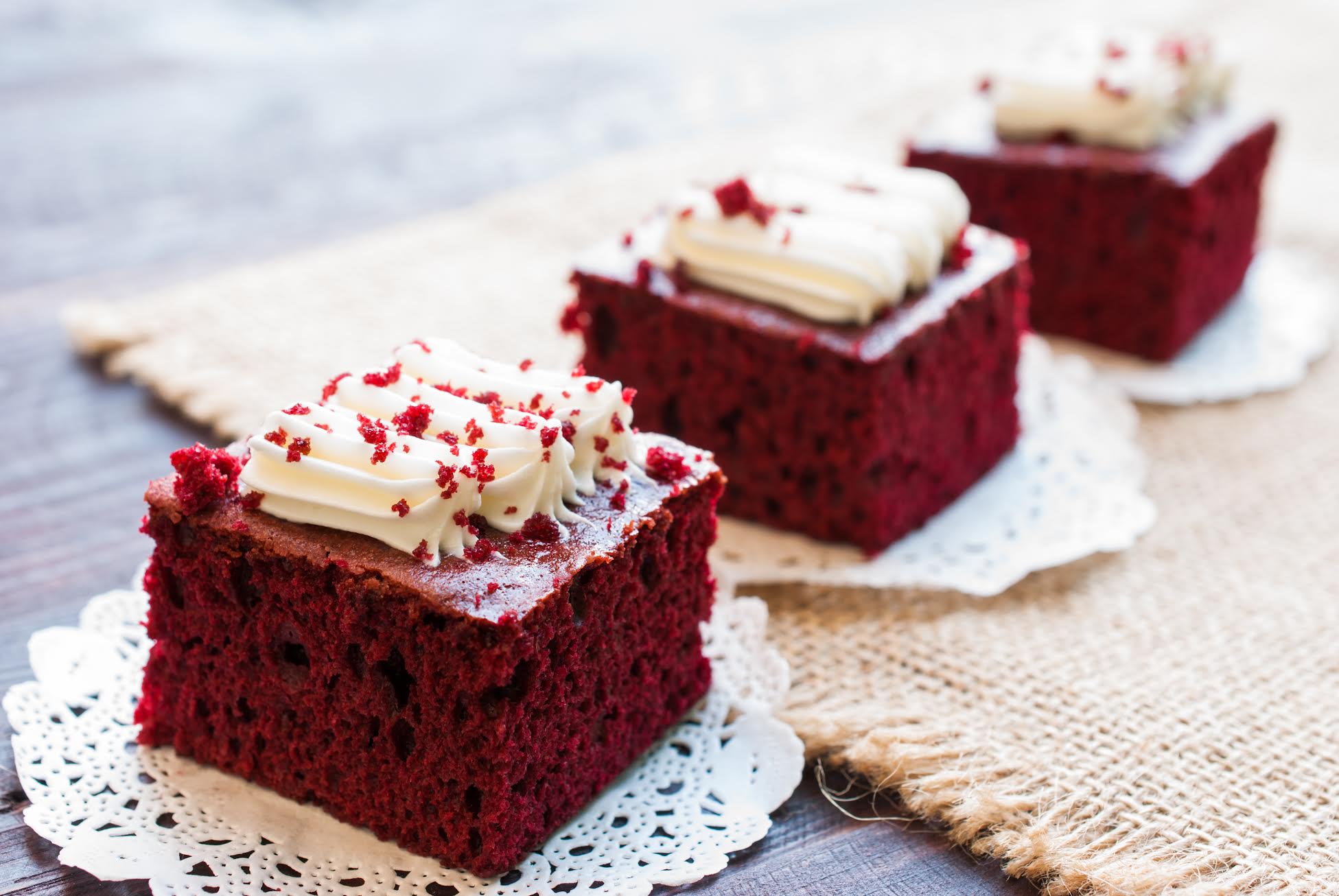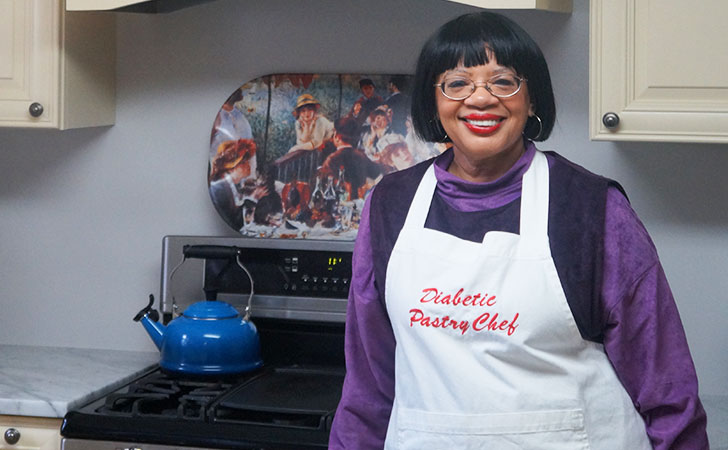Sugar-Free Red Velvet Cake Squares Recipe by The Diabetic Pastry Chef
Ingredients
1 cup all-purpose flour
1 cup white whole-wheat flour
1 tsp baking powder
1 tsp baking soda
3/4 tsp salt
2 Tbsp. cocoa powder
2 cups sugar-substitute of your choice
3/4 cup vegetable oil
2 eggs
1 cup buttermilk
2 tsp pure vanilla extract
2 tsps. red food coloring
1 tsp vinegar
1/2 cup hot coffee
Ingredients
1 cup all-purpose flour
Directions
Combine all dry ingredients in a large bowl; set aside.
In the bowl with an electric mixer, combine sugar-substitute and vegetable oil. Add in the rest of the wet ingredients and mix well.
Add dry ingredients in thirds to wet ingredients, mixing just until combined.
Preheat oven to 350 degrees. Add batter to greased and floured 9×13″ pan. Bake for about 30 to 40 minutes, or until the cake pulls away from the sides of the pan and the center springs back when touched.
After cooling, sprinkle top with sugar-free confectioners sugar such as Swerve Confectioners. Serve cake cut into squares topped with whipped cream or whipped topping.

Although red velvet cake is generally linked with Valentine’s Day, it is also served at Juneteenth parties. For Juneteenth celebrations, the color red represents the struggle and bloodshed of the enslaved as well as the ultimate resilience of the people.
Clarence Waldron talks about his stroke, recovery, working as Senior Editor and Writer of Jet Magazine, and his memories of Luther Vandross and Aretha Franklin.
Twenty years ago, Clarence interviewed Luther’s mother, Mrs. Mary Ida Vandross, for Jet Magazine after Luther suffered a stroke due to mismanaged type 2 diabetes. Clarence’s story is an excellent reminder of why it’s essential to ACT F.A.S.T. if you or a loved one is experiencing a stroke. The acronym FAST (Facial drooping, Arm weakness, Speech difficulties, and Time) has been used by the National Stroke Association, American Heart Association, and others to educate the public on detecting stroke symptoms.
Earlier treatment results in a greater chance of recovery, a reduced likelihood of permanent disability, and a lesser need for extensive rehabilitation. You’ll quickly hear Clarence’s upbeat attitude and ferocious appetite for music and divas have served him well during his recovery.
Throughout this podcast, we feature music from Aretha Franklin’s Get It Right album and Luther Vandross’s Live At Radio City Music Hall 2003 20th Anniversary Edition album courtesy of SONY Music.


